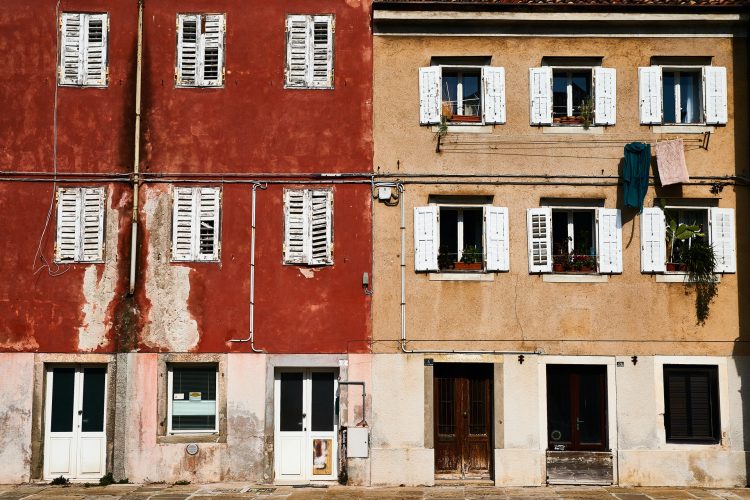Indoor air quality (IAQ) is said to be up to five time worse than outdoors. Both dust and mold have a negative impact on IAQ. While dust isn’t mold, mold actively uses dust as a vehicle for transmission and a nutrient source.
Mold is part of the fungi kingdom and are referred to as Hyphomycetes. Molds are eukaryotic micro-organisms that reproduce asexually (primarily) via spores. Unlike mold, dust is not an organism. Dust is comprised of organic and inorganic particle matter like dirt, pollen, dead skin cells, pet dander, and lint.
Both dust and mold are airborne pollutants that contribute to poor air quality. Apart from one being a living organism, they have distinct differences that are important to understand.
What is Mold?
Mold is part of the fungi kingdom. It’s a non-scientific term used for many types and species of fungi. Fungi comprise a large number of organisms and roughly 300,000 species. The United States Environmental Protection Agency (EPA) defines fungus as “types of plants that have no leaves, flowers, or roots.”
In nature, molds are referred to as decomposers as they work to break down dead, organic materials like plants, trees, and various other detritus. In order for mold to grow and germinate, it needs an organic, carbon-containing nutrient source, like dust.
Regardless of mold species, most if not all indoor molds reproduce via spores. Spores exist all around us and can lay dormant for years. Once mold finds itself in the ideal conditions for germination, it will start to grow.
Ideal conditions for growth include moisture (water source), food source, and oxygen. Some molds also thrive in various ambient temperatures as well as lighting.

What is Dust?
In laymen terms, dust is a collection of tiny airborne particle matter. These particulates contain both organic and inorganic materials like dead skin cells, hair, bacteria, dead bugs, insect excrement, pollen, pet dander, food particles, etc.
The dust found in your house will depend on your environment. It’s also commonly believed that dust is primarily made of human skin, this is not true. Dust is primarily comprised of soot and airborne particles like pollen that are tracked inside.
How to Tell the Difference Between Mold and Dust
While mold test kits do exist, they can be expensive. Most people also want to be able to visually differentiate the two. However, you can use all your senses as means of evaluation.
Molds can grow in a variety of colors and are usually easily distinguishable. However, at their onset, it can be hard to see the difference between mold and dust. Mold also doesn’t wipe clean and germinate on whatever surface/nutrient source it’s on. Usually a damp cloth, if you’re able to wipe the surface clean, it’s likely not mold.
Besides being able to visually distinguish mold from dust, you can also smell the difference. Water Mold Fire (WMF) explains that mold has a distinct musty smell. It’s often compared to wet socks or rotten wood. Dust on the other hand will smell earthy, like dirt.
Gravity has more of an impact on dust than it does on mold. Gravity will pull dust to the top of a surface, rather than the bottom of it. If you find something growing on the bottom of a surface, it’s likely mold.
You can manufacture your own test with diluted bleach (1-part bleach, 16 parts water) and a cotton swab. Upon application of the swab, if you notice the spot quickly lightens (1-2 minutes) you can assume its mold. If it doesn’t change color, it’s likely dust or dirt.
Note: While bleach can kill some mold, the purpose of the test is to remove the color from the mold.
How to Improve Indoor Air Quality
The EPA notes that indoor air quality is 2 to 5 times worse than outdoors. This is especially problematic as Americans spend 90% of their time indoors.
Osha goes on to say that the most common causes of IAQ related issues are poor ventilation, lack of maintenance for heating and HVAC systems, and humidity.

Ventilation
By opening windows and doors, you allow the space to fill with fresh air and the potentially harmful air to leave the space. As low as humidity levels are maintained, the potentiality for the mold spores to germinate is minimal.
You can also make use of air purifiers to help filter indoor air. Air purifiers make use of filters like HEPA or High Efficiency Particulate Air filters. These filters are used to help remove dust as well as mold spores from the air.
HEPA filters are capable of filtering particles as small as 0.03 microns. Dust particles are between 2.5 to 10 microns and mold spores are sized between 1 to 30 microns.
These types of filters can also be integrated into air conditioning systems and furnaces. Typically, an HVAC and vents will use MERV (Minimum Efficiency Reporting Value) rated filters. A MERV rating of eight results in 70 to 85% of particles 3 to 10 microns in size being filtered.
MERV values range from 1 to 16. Essentially the higher the value, the more efficient the filter is.
These filters for both the furnace and air conditioning systems should be changed regularly. As they become pollutant laden, they lose their efficiency and can do more harm than good. It’s best to change air filters every 30 to 60 days depending on external factors.
Humidity and Moisture
Mold only grows in the presence of moisture. Higher humidity levels result warm air condensing on cold surfaces like plumbing and walls. Over time this process of condensation results in moisture/water build-up that mold uses to germinate.
The EPA details that indoor humidity levels should be kept below 60% and within the range of 30-50%.
In order to combat humidity and moisture build-up you can use a dehumidifier to remove water vapor from the air.
You can also work to insulate plumbing with closed-cell foam and duct-work with fiberglass to combat heat transfer and condensation. You should also ensure appliances like dryers are ventilated/exhausted properly.

